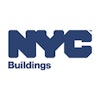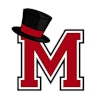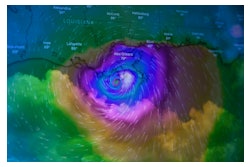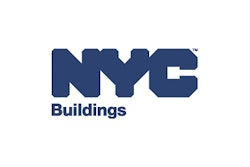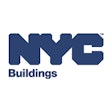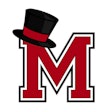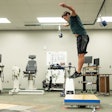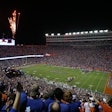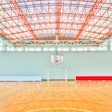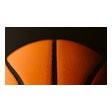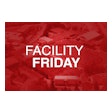![University of Houston indoor football practice facility. [Photo courtesy of Velux]](https://img.athleticbusiness.com/files/base/abmedia/all/image/2020/06/ab.spot620_feat.png?auto=format%2Ccompress&q=70&w=400)
As the arms race for nicer athletic facilities has progressed, universities are looking to create spaces that are about more than the workout. Schools want to give their students and athletes a place to improve physically, but also mentally, by creating a space in which people are comfortable socializing, studying and spending a good portion of their time.
How do building operators entice people to spend prolonged periods of time inside? One way is by bringing in natural light to create a space that doesn't feel as though it's walled off from the outdoors.
"We're starting to see a little more prioritization in daylighting products that can impact spaces more dramatically," VELUX commercial sales manager Brian Grohe says. "Instead of just bringing natural light in, we want to also bring in fresh air through skylights and give people a connection to the outdoors."
Personal and emotional benefits haven't always been the focus of daylighting. The trend initially began with a push toward energy efficiency, with companies searching for the most economical and efficient way to light their buildings. As energy-efficient lighting became the norm, building operators began seeking new benefits from natural light, and daylighting companies began to accommodate them.
"Now we try to push the health benefits and the mental health benefits, as well as the energy-saving side," says Mark Mitchell, marketing director at Major Industries. "Anytime you cut back on how much artificial lighting you need, that can be a big help, especially in really large spaces."
"It kind of hit its market saturation if you want to call it that, so architects and building designers really started to focus on new ways of impacting the building," Grohe says, noting the energy-efficiency benefits are ever-present but don't necessarily drive the entire decision-making process. "The people and the occupants became the focal point.
"We reference a lot of studies in the daylighting industry that point back to the physiological impacts of daylighting. Students perform better on test scores, employees tend to work more efficiently in office spaces, and people overall just like being in environments where there's natural light, because it has a positive impact on their circadian rhythm. Having that exposure to natural light throughout the day, through any type of system, regardless of whether it's vertically installed or horizontally installed, gives people a different feeling inside a building that is helping them overcome the idea of spending a majority of their time indoors."
VELUX informs potential customers that about 90 percent of people's time is spent inside, and that poor indoor air quality can decrease office productivity by 10 percent. As more people become aware of how buildings impact productivity, the younger workforce is looking to spend their days in unique work environments that offer variety.
![University of Florida indoor football practice facility. [Photo courtesy of Major Industries]](https://img.athleticbusiness.com/files/base/abmedia/all/image/2020/06/ab.spot620a.png?auto=format%2Ccompress&fit=max&q=70&w=400) University of Florida indoor football practice facility. [Photo courtesy of Major Industries]
University of Florida indoor football practice facility. [Photo courtesy of Major Industries]
Bringing the outdoors in
There are a number of ways to give people a comfortable, outdoor feeling while inside. In the athletics industry, operators seek daylighting solutions in practice facilities, aquatics facilities and recreation centers. Translucent panels have become a popular way to fill those immense spaces with light, while also decreasing heat gain and glare, and offering privacy to people working out or swimming.
"You get the benefit of natural light, but you also protect the people inside a little bit," Mitchell says. "A lot of the larger football programs are building large indoor practice facilities for their athletes. For those reasons, it lets the light in, it diffuses it a little bit so that you don't get that direct sunlight that can be glary and harmful, especially in a sports setting. It brings in that softer light."
The more comfortable prospective student-athletes feel in a space, the more likely they'll be to attend the school. From there, they'll likely spend more time working out, which could eventually lead to more wins and more money for the university.
"I think athletic facilities of any type are focused even more so on the occupants than other buildings, in the sense that everything in the building is designed to encourage an environment where athletes can perform to their fullest," Grohe says. "Giving athletes that exposure to natural light and that feeling of an environment where they're most comfortable and feel the best about themselves, is only going to increase their potential to excel at whatever they're doing athletically in that space."
The athletics industry naturally has vast spaces, whether it's a gymnasium, track, indoor practice facility, swimming pool or recreation center. Such large facilities require daylighting companies to work with architects and designers to determine the best, most efficient way to bring natural light into those spaces. Buildings can utilize roof windows, skylights, translucent panels, skyroofs or a number of products to influence the interior lighting.
"We can do daylighting analysis and daylighting studies to help them determine that light pattern and how it's going to reach the space," Mitchell says. "On the athletic facilities side, it's mostly wall systems — I think because they're a little more versatile. Sometimes with these large facilities, too, it's a little harder to put skylights in, so those wall panels just make more sense.
"You get some nice, bright light, it's not glary, and it's not only going to affect the athletes but the people sitting and watching, too."
RELATED: PRODUCT SPOTLIGHT 2020: Building Systems | Shade Structures
Velux implemented a vertical polycarbonate system on the sides of the University of Houston's indoor football practice facility in 2017. Such wall systems allow for teams to keep a relatively familiar feeling when the weather doesn't allow them to practice outside.
"They're also becoming a big application in things like athletic field houses, high school auditoriums and things like that," Grohe says. "Some customers don't want to change the structure of the roof or the integrity of the roof, or account for different reinforcement needed for daylighting, but they'll use a lot of the vertical facade to have the same effect by bringing a lot of natural light in without having it overpower the space.
"We try to take into account how we can get the most natural light into the space. Then it's what can we do with that light? It's not enough to just bring natural light into a space, you have to use it effectively to reap the benefits."
The ways in which light boosts the comfort and productivity of building occupants — not only in athletics facilities, but in offices, hospitals, airports, high schools and fire departments — have continued to develop as technology has advanced.
"We're just trying to proactively educate the architecture community on the advancements in daylighting technology. Just what the possibilities are nowadays," Grohe says. "It's very different than it was 10 or 11 years ago when I got into the industry."
RELATED: Find more solutions for your facility in the Buyers Guide
Removing the roof
In some spaces, that might mean removing the roof completely. That's where companies like OpenAire come in to create a custom retractable roof that can be opened or closed at the push of a button to create an indoor-outdoor building. According to Nancy Patterson, the director of business development and design at OpenAire, retractable roofs and skylights allow operators to completely transform their buildings.
"It changes the way you think about your space," Patterson says, noting that retractable roofs have been installed in different climates throughout the world, including high-temperature areas such as Texas and California. "We have several case studies of operators who said that the benefit to them is they can program their space entirely different. They don't have to worry about rain delays. You can program the space 365 days a year."
The retractable roof also serves as a natural ventilation system in aquatic facilities, which benefit from frequent release of exhaust. If a fully retractable roof isn't right for a project, OpenAire offers a line of skylights that can have a dramatic impact.
"The thing about a skylight is a skylight might be 100 feet wide or 200 feet long," Patterson says, noting that OpenAire is currently in the process of constructing a 26-foot-tall, 100-foot-wide sliding door for the planned OWA Waterpark in Foley, Ala. "People have a vision of the little rectangles you see on people's houses, but the reality is a skylight can be the entire length or width of your building.
"They just want to bring in sunshine or brightness, so really what we end up doing is cutting the entire roof of the building and putting a skylight on. It makes you think about your building in a very different way."
With the ongoing COVID-19 pandemic keeping people across the world inside, future buildings may also look to implement daylighting options that allow individuals to feel comfortable while indoors.
"There's not going to be a mad rush to be in crowded, enclosed spaces," Patterson says. "There's a little more interest now in a space that is indoor so you get the benefit of using it year-round, but outdoor so you don't feel enclosed in a particular environment."
This article originally appeared in the June 2020 issue of Athletic Business with the title "Overhauling athletic spaces with natural light." Athletic Business is a free magazine for professionals in the athletic, fitness and recreation industry. Click here to subscribe.













